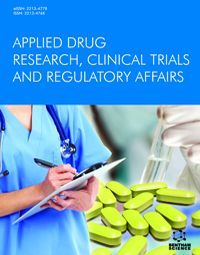
Abstract
Regulatory affairs are one of the most crucial connections between the pharmaceutical company and the other stakeholder’s or regulatory agencies such as FDA, EMA, etc. Strategies in drug approval and marketing to assure the quality, safety, and efficacy of the drug follow the guidelines and laws stated under the drug and cosmetic act 1940 and rules 1945. Their primary responsibility is to keep the company in compliance with changing guidelines, which necessitates constant monitoring of the most recent industry updates. Drug regulation is a complex process as every country has its own set of documentation that must be done while regulatory submissions. From drug development and drug approval to drug commercialisation, there is a large amount of documentation that must be completed with accuracy, which can be challenging for the professional to complete, therefore, this leads to the introduction of the concept of big data that can be incorporated which will map the regulations according to 5vs model of big data. Thus, to make it more efficient, we can work big data with artificial intelligence to ease the process using natural language processing. This concept will map all the rules and guidelines together and make a cluster of similar rules together. Now, users can use the tool to locate the data of interest in a single site in a more comprised universal language that can be accessed by any professional to complete the task in the given time schedule.
[http://dx.doi.org/10.47583/ijpsrr.2021.v68i02.009]
[http://dx.doi.org/10.5465/amj.2014.4002]
[http://dx.doi.org/10.5114/jcb.2020.100384] [PMID: 33299440]
[http://dx.doi.org/10.1016/j.bdr.2015.01.003]
[http://dx.doi.org/10.1016/B978-0-12-822211-9.00001-0]
[http://dx.doi.org/10.1016/B978-0-12-822211-9.00003-4]
[http://dx.doi.org/10.1016/B978-0-12-822211-9.00006-X]
[http://dx.doi.org/10.2165/00019053-200220003-00001] [PMID: 12457421]
[PMID: 27731961]
[http://dx.doi.org/10.1016/j.addr.2006.10.010] [PMID: 17196703]
[http://dx.doi.org/10.1093/nsr/nwt032] [PMID: 25419469]
[http://dx.doi.org/10.1016/j.procs.2015.04.188]
[http://dx.doi.org/10.1016/j.tips.2019.05.005] [PMID: 31326235]
[http://dx.doi.org/10.1001/jama.2020.1039] [PMID: 32065828]
[http://dx.doi.org/10.3389/fonc.2020.01629] [PMID: 33042806]
[http://dx.doi.org/10.1308/147870804290] [PMID: 15333167]
[http://dx.doi.org/10.1016/j.drudis.2020.10.010] [PMID: 33099022]
[http://dx.doi.org/10.1016/j.tips.2019.07.005] [PMID: 31383376]
[http://dx.doi.org/10.1016/S0004-3702(99)00075-2]
[http://dx.doi.org/10.1038/nrd.2017.26] [PMID: 28232724]
[http://dx.doi.org/10.1109/ICRITO.2018.8748434]
[http://dx.doi.org/10.1136/amiajnl-2011-000464] [PMID: 21846786]
[http://dx.doi.org/10.1126/science.aaa8685] [PMID: 26185244]
[PMID: 23556403]
[http://dx.doi.org/10.1145/234173.234210]
[http://dx.doi.org/10.1007/s40264-017-0558-6] [PMID: 28643174]
[http://dx.doi.org/10.1197/jamia.M1552] [PMID: 15187068]
[http://dx.doi.org/10.4103/2229-3485.134304] [PMID: 24987579]
[http://dx.doi.org/10.1093/bib/bbab108] [PMID: 33839742]









